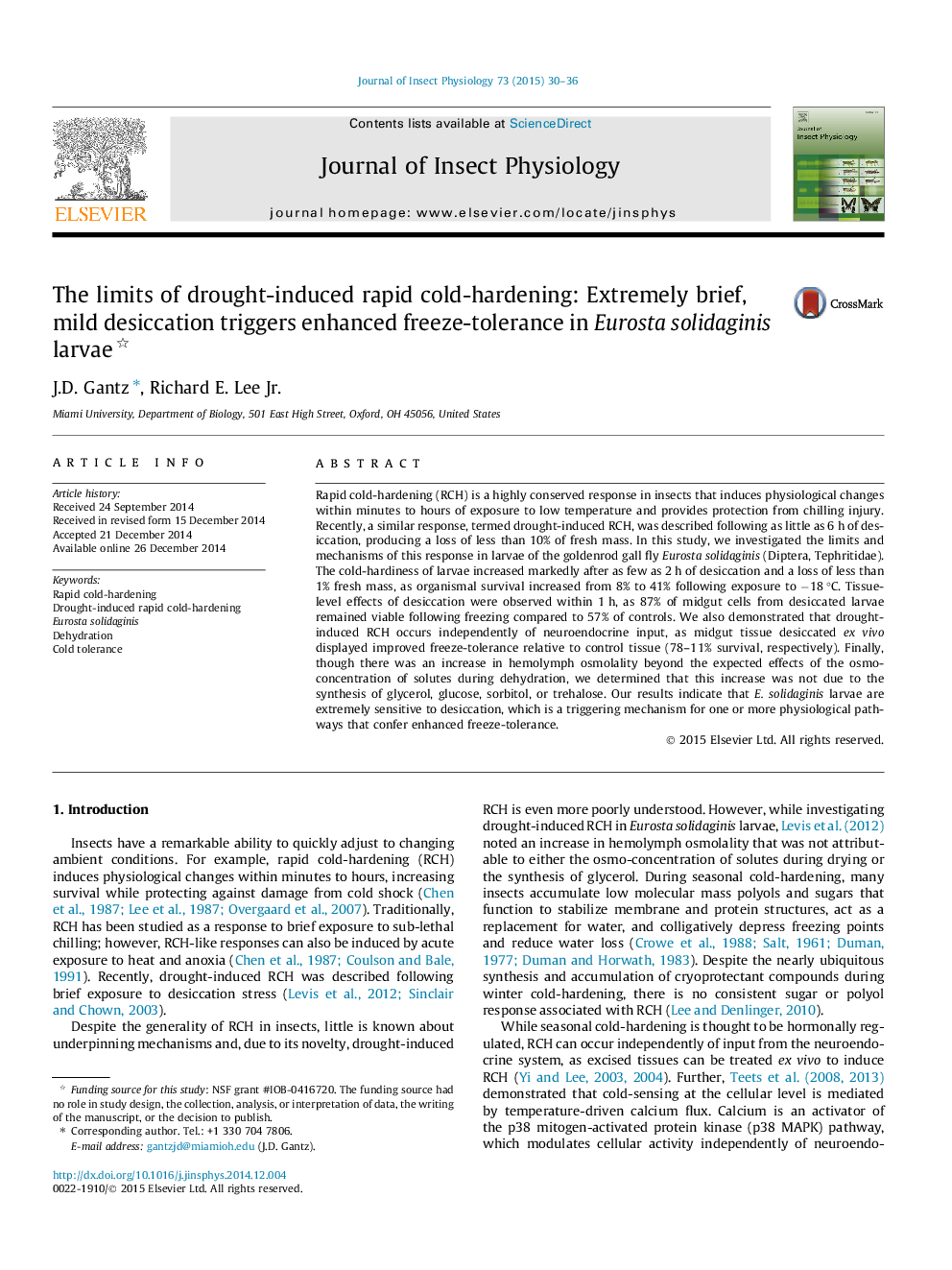| Article ID | Journal | Published Year | Pages | File Type |
|---|---|---|---|---|
| 2840422 | Journal of Insect Physiology | 2015 | 7 Pages |
•Rapid cold-hardening was induced by desiccation within 1 h.•Loss of less than 1% of larval fresh mass over 2 h triggered rapid cold-hardening.•Drought-induced rapid cold-hardening can occur without neuroendocrine input.
Rapid cold-hardening (RCH) is a highly conserved response in insects that induces physiological changes within minutes to hours of exposure to low temperature and provides protection from chilling injury. Recently, a similar response, termed drought-induced RCH, was described following as little as 6 h of desiccation, producing a loss of less than 10% of fresh mass. In this study, we investigated the limits and mechanisms of this response in larvae of the goldenrod gall fly Eurosta solidaginis (Diptera, Tephritidae). The cold-hardiness of larvae increased markedly after as few as 2 h of desiccation and a loss of less than 1% fresh mass, as organismal survival increased from 8% to 41% following exposure to −18 °C. Tissue-level effects of desiccation were observed within 1 h, as 87% of midgut cells from desiccated larvae remained viable following freezing compared to 57% of controls. We also demonstrated that drought-induced RCH occurs independently of neuroendocrine input, as midgut tissue desiccated ex vivo displayed improved freeze-tolerance relative to control tissue (78–11% survival, respectively). Finally, though there was an increase in hemolymph osmolality beyond the expected effects of the osmo-concentration of solutes during dehydration, we determined that this increase was not due to the synthesis of glycerol, glucose, sorbitol, or trehalose. Our results indicate that E. solidaginis larvae are extremely sensitive to desiccation, which is a triggering mechanism for one or more physiological pathways that confer enhanced freeze-tolerance.
Graphical abstractFigure optionsDownload full-size imageDownload as PowerPoint slide
